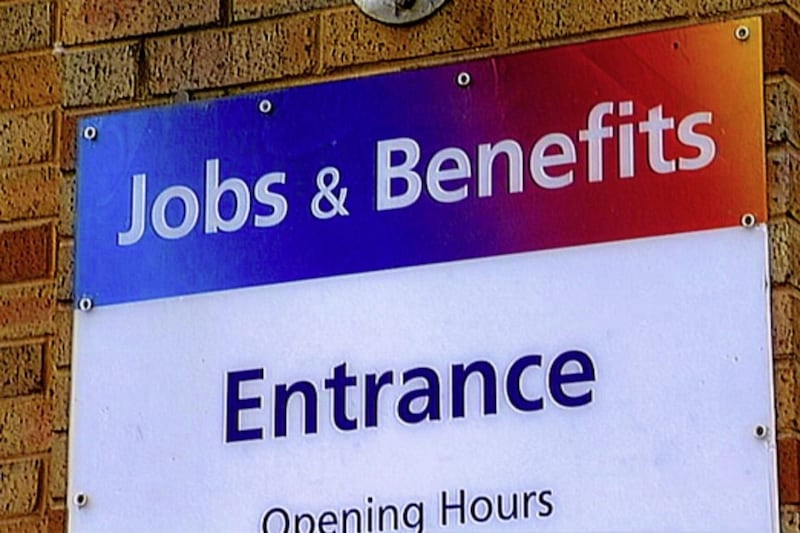The north’s unemployment rate held at 2% in the three months to September, but new data published on Tuesday suggests things may be slowing down in the local labour market.
The latest monthly tracker from the Northern Ireland Statistics and Research Agency (Nisra) recorded falls in the employment rate, weekly hours worked and the total number of PAYE (pay as you earn) workers.
Meanwhile, economic inactivity and the claimant count were on the increase.
The monthly report from Nisra includes the results of its labour force survey (LFS), conducted among households spanning the July to September period.
While the headline rate of unemployment held at 2%, it estimates the north’s employment rate decreased by 1.2 percentage points (pps) over the quarter to 70.3%, the weakest figure for two years.
Northern Ireland’s economic inactivity rate, i.e. the proportion of people aged 16 to 64 who were not working and were not seeking or available to work, increased by 1.2pps over the quarter to 28.2%.
More up-to-date figures sourced from HMRC indicate little or no jobs growth in October.
The total number of PAYE jobs dipped 0.1% to 805,325 between September and October.
The total was still 1.1% higher than the same month last year.
The median monthly earnings for PAYE workers stood at £2,258 last month, an increase of £5 (0.2%) on September and £148 (7%) higher over the year.
The north’s claimant count increased 1.3% in October to 42,200, the equivalent of 4.3% of the total workforce.
Elsewhere, November’s labour market report estimated that the total number of weekly hours worked in Northern Ireland stood at 27.7 million hours in the three months to September, a decrease of 4.3% on the previous quarter.
The report also tracked 170 confirmed redundancies in October, with employer’s proposing a further 250 job cuts last month.
The figures only include cases where employers were statutorily obliged to disclose lay-offs involving 20 or more jobs.
Meanwhile, a separate survey published on Tuesday by Ulster Bank suggests the north’s private sector continued to perform well in October.
The latest monthly growth tracker from the NatWest-owned lender said Northern Ireland remained the UK’s stand-out economic performer last month, with private sector businesses posting the fastest increases in both output and employment.
Based on the feedback of 200 businesses across the services, manufacturing, construction and retail sectors, the survey detected growth in three of the four sectors, with retail being the exception.
Commenting on the latest employment data, chief executive of the Labour Relations Agency, Mark McAllister said it forms the backdrop to rising tensions over public sector pay deals.
“With new pay deals being ready to be negotiated and the inflation percentage not being reflected in workers’ pockets, it makes for a tense time with trade unions going into the negotiating room with firm figures in their head and the memories of recent strikes still fresh in their mind,” he said.
“Meanwhile employers are struggling with costs and cannot see a way to keep the industrial peace, let alone grow the economy with national insurance costs impacting on pay deals across the board.”








